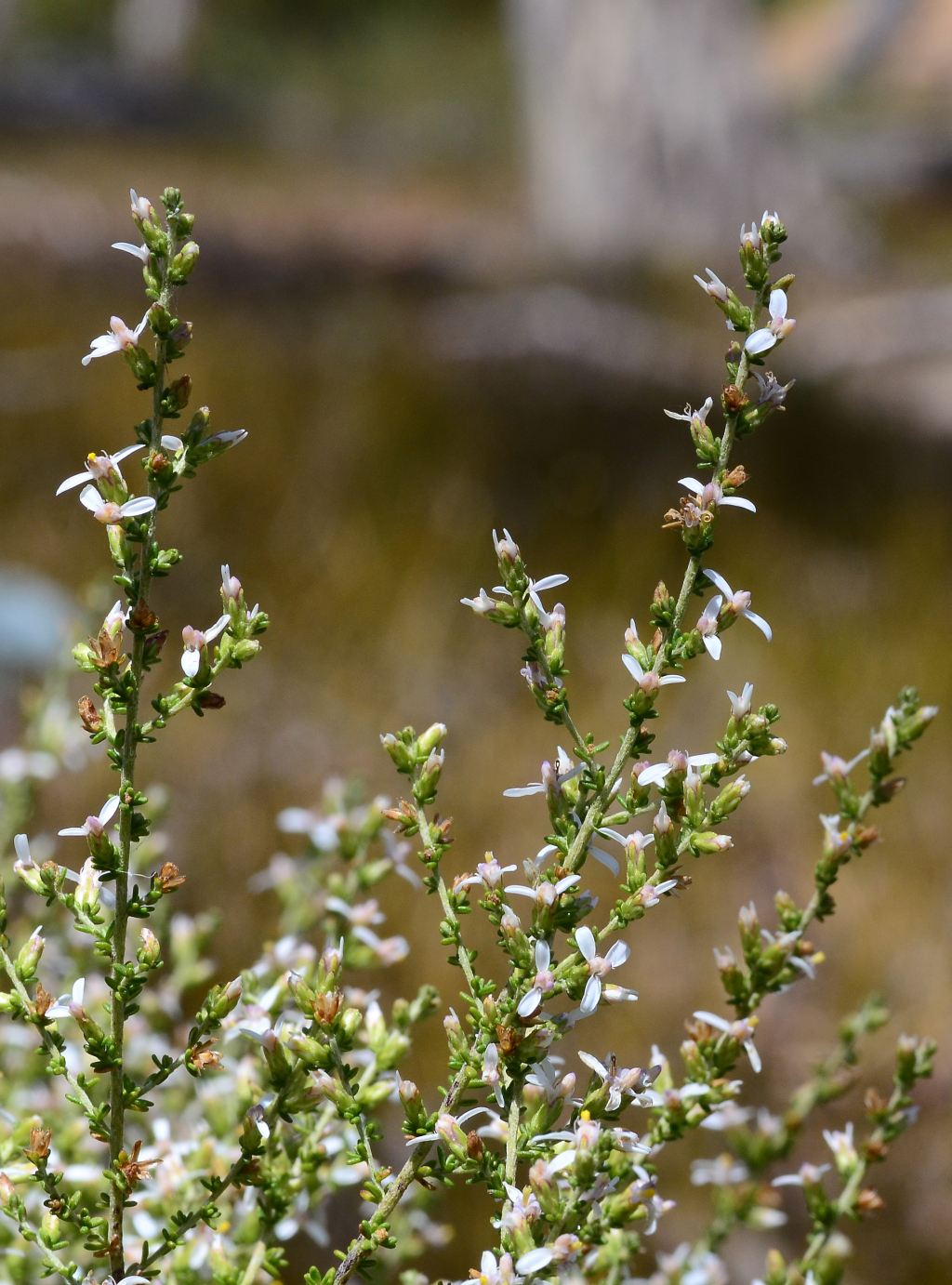Olearia floribunda
(Hook.f.) Benth.Procumbent to slender, erect shrub to 2(–4) m high; branchlets densely cottony-pubescent. Leaves alternate, sessile or subsessile, in loose clusters, narrow-elliptic to ovate, 0.5–3 mm long, 0.5–1 mm wide, acute or obtuse; upper surface glabrous or glabrescent, or sometimes hispid toward margin; lower surface greyish, cottony-pubescent, partly to largely obscured by the revolute margins. Capitula sessile, solitary, terminating short lateral branchlets or leaf clusters, 8–13 mm diam.; involucre conical, 3–5 mm long; bracts 3–5-seriate, graduating, obtuse, usually glabrous in lower part, but with a subapical cottony or resinous patch. Ray florets 3–7, white, mauve or blue, ligules 3–6 mm long; disc florets 3–9, cream to mauve. Cypsela narrowly obovoid, 1–1.5 mm long, glabrescent to densely sericeous; pappus bristles whitish, 2–2.5 mm long. Flowers mostly Aug.–Dec.
LoM, MuM, Wim, GleP, VVP, OtP, Gold, CVU, GGr, DunT, NIS, EGL, HNF, Strz, MonT, VAlp. Also SA, NSW, Tas. Widespread through a wide variety of habitats across southern parts of the State, extending as far north as the Little Desert, Bendigo Whipstick, and Corryong areas, and from near sea-level to the subalps (but see note under O. algida).
The distinction between Olearia floribunda, O. lanuginosa and O. algida appears to be imperfect. Perhaps the best feature to distinguish O. floribunda from these two species is the less tightly bunched leaf clusters. Specimens from the Grampians, Brisbane Ranges and Anglesea appear somewhat intermediate between O. floribunda and O. lanuginosa. See note under O. algida.
Walsh, N.G.; Lander, N.S. (1999). Olearia. In: Walsh, N.G.; Entwisle, T.J., Flora of Victoria Vol. 4, Cornaceae to Asteraceae, pp. 886–912. Inkata Press, Melbourne.
 Spinning
Spinning
